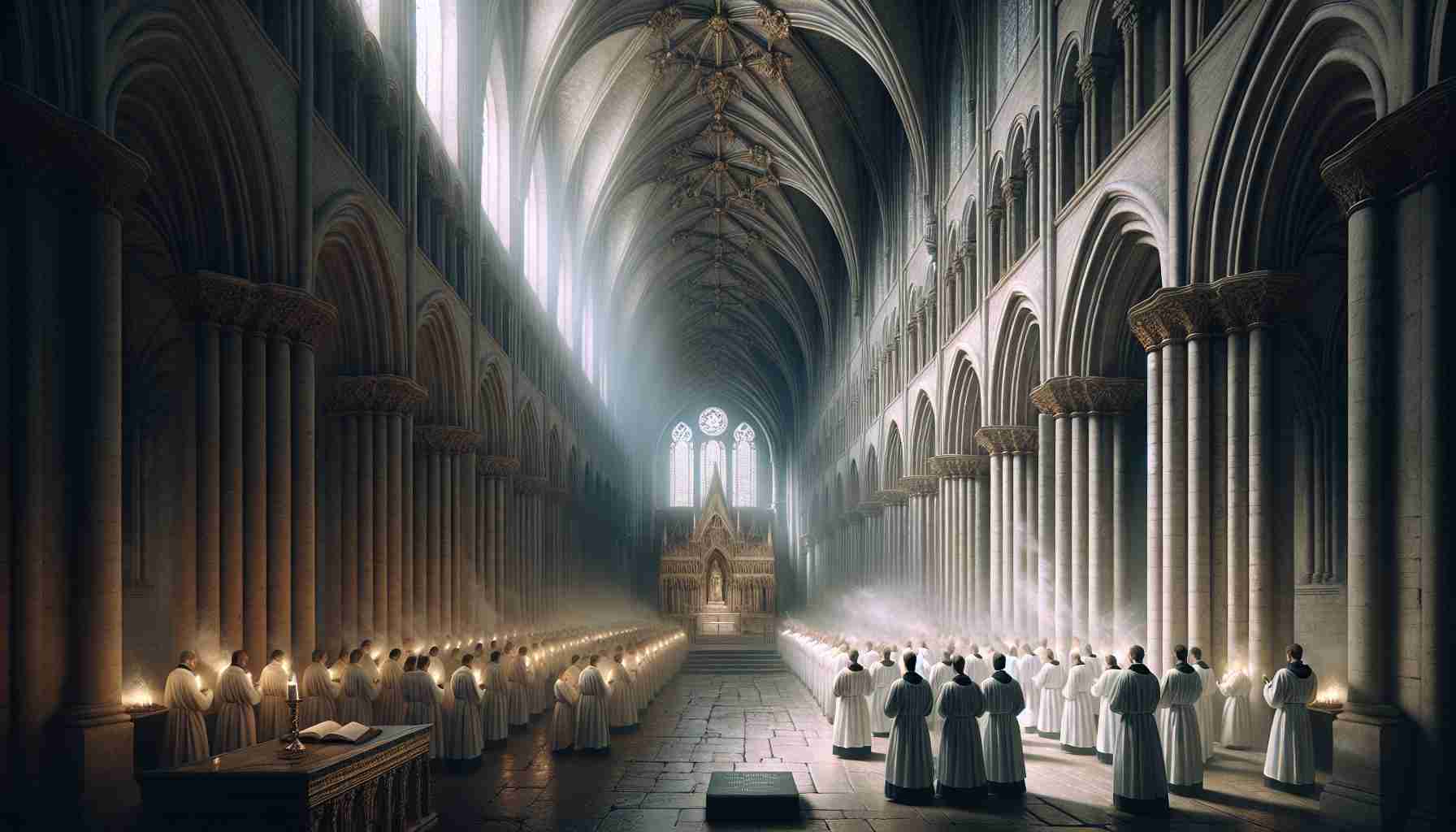

A cold wind stirred across the Thames, lifting pennants atop stone towers and biting at the robes of the clergy gathered beneath leaden skies. Inside the new abbey, torchlight flickered against vaulting so high it seemed the breath of God might descend from it. Stone arches soared like wings frozen mid-flight, and windows of uncolored glass stared pale and open to the gloom outside. The day was December 28, in the year of our Lord 1065—and all England paused as Westminster Abbey received its consecration.
King Edward, called the Confessor, had not come. A fever had reduced him to whispers in his palace bed nearby. Yet what he had dreamed, prayed for, and willed into being stood now in solemn glory by the riverbank—a church of such magnitude and mystery it rivaled the sacred foundations of Rome. Monks, vested in white, intoned the Latin rites, their voices echoing off newly-hewn Caen stone. Incense rose like spirit smoke, curling into the groins of the nave and the scalloped capitals of Norman columns.
It had begun decades earlier, when an oath—half vision, half vow—had seized Edward’s soul. Banished to Normandy as a youth, far from the chaos of Danish England, the pious prince had claimed St. Peter appeared to him in a dream. If ever he returned to rule, he would raise a church in the saint’s honor, built not merely of stone and slate but of devotion.
He returned, crowned king in a fractured land caught between Norse ambition and Saxon arrogance. But Edward built quietly. He gave not just from the treasury but from the very sinews of his heart—“Moreover,” he'd once said, “because I have set my affection to the house of my God, I have given of mine own proper good…” (1 Chronicles 29:3). Not for himself, but for England—for the binding of its blood and the crowning of its destiny in Christ.
They called it the “West Minster” to distinguish it from the older, smaller “East Minster” in the City. But this was no mere distinction of direction. Rising with its twin towers over the marshland called Thorney Island, the abbey reached toward heaven in form and function. Its crypt bore relics. Its apse embraced saints. And soon, its coronation chair would hold kings.
Yet for all its grandeur, Edward would see none of it in celebration. Just eight days after its consecration, bells tolled not triumph, but burial. On the vigil of the Epiphany, monks carried his body—gaunt, unseeing—into the abbey he had built. The first to be buried there, beneath his own altar.
They whispered of miracles. A blind man touching the king's tomb was said to see again. Soldiers claimed prayers spoken at Edward’s grave turned arrows midair. Within sixty years, Pope Alexander III canonized him. St. Edward the Confessor—king, martyr of motive, not execution.
The Abbey became royal ground. William the Conqueror, once an unwanted foreigner, rode in from Hastings and demanded crowning there—hoping not only to wear Edward’s title but to absorb his sanctity. So it began. Every English monarch, save two, anointed and enthroned within Westminster's echoing chancel. The church became a mirror of heaven’s throne room. Divine right, cast in stone.
Yet across the centuries, doubt and debate trailed the Abbey like shadows from its cloisters. Edward's relics, exhumed during the Dissolution by Henry VIII, were mishandled—some said hidden, others claimed desecrated. Pilgrimages ceased. The shrine dismantled. Abbey monks expelled.
Still, the bones endured.
In 1661, under Charles II, St. Edward’s shrine was rebuilt atop its original base. A canopy of gilded wood, interlaced with saints and angels, stood once more beside the high altar. Silence settled again around his resting place—no longer thronged by pilgrims, but kept in reverent hush.
In hidden corners, masons over generations etched their marks—a fish, a cross, a hand—sigils of faith and trade coexistent. An angle of sunlight through southern clerestory still struck the slab each Easter morning, just so. And as kings swore oaths by candlelight, promising justice and mercy upon that holy ground, Edward's dream whispered across the vaulted hush: a unified realm, baptized in belief, standing not by the sword but by sanctuary.
Today, Westminster Abbey stands not only as cathedral or coronation hall, but as anchor of continuity bent through the Tempter's fire. Wars raged, crowns changed, priests fled or flourished—but the Abbey remained. Earthbound testament that what is built in faith, anointed in selfless offering, endures beneath Heaven’s gaze.
At the site of a Saxon king’s dream, stones still speak.
And in the silence between morning prayer and evensong, one might still hear footsteps echoing on ancient tiles—holy echoes of a monarch who gave all he had, and then gave himself.